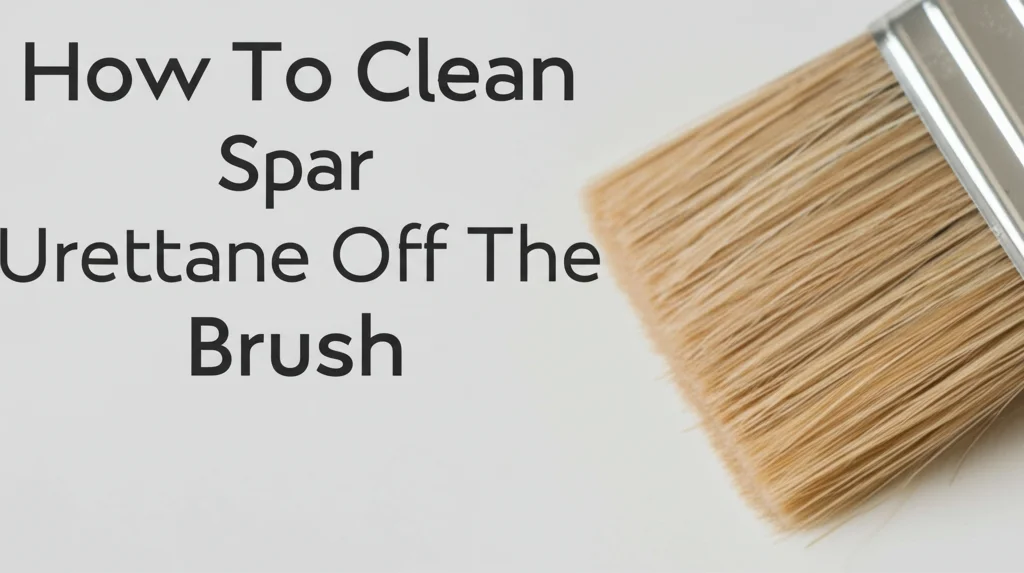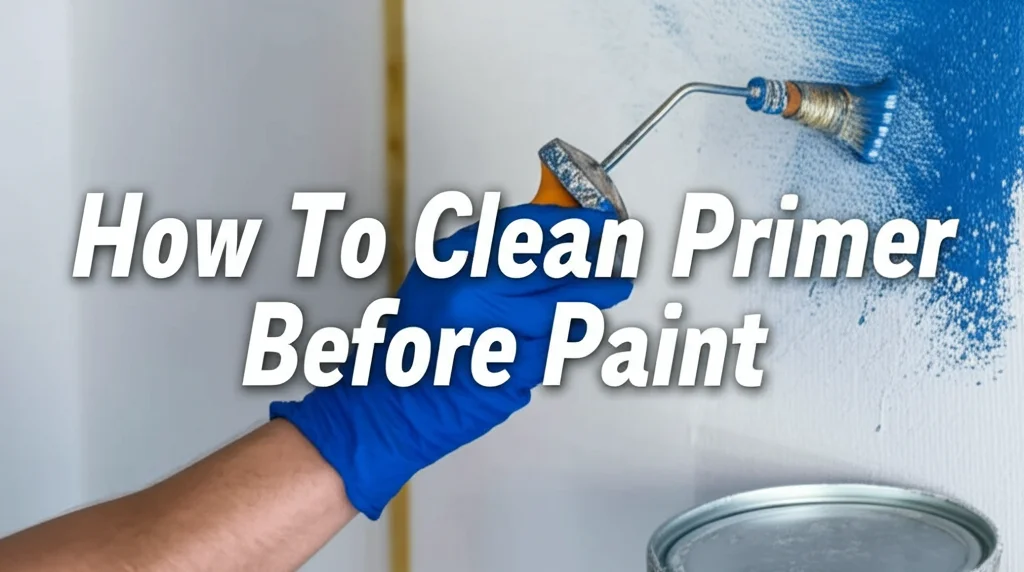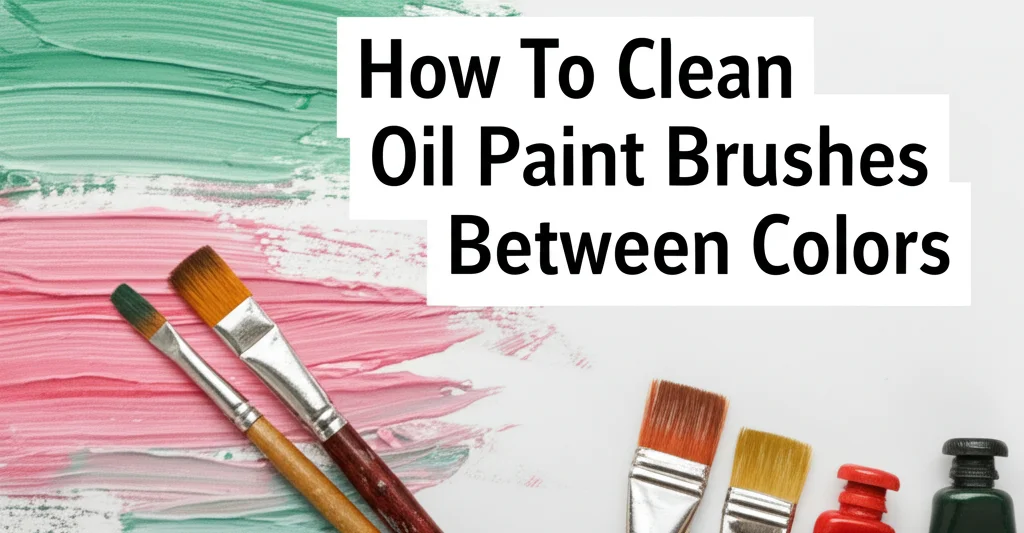· Painting & Home Improvement · 7 min read
How To Clean Spar Urethane Off The Brush

Cleaning Spar Urethane Off Your Brush: A Step-by-Step Guide
Ever finished a beautiful spar urethane project and then stared at the hardened brush with dread? You’re not alone! Spar urethane, known for its durability and weather resistance, can be a real pain to remove from brushes. This article will walk you through the best methods for cleaning spar urethane off your brush, saving you money and extending the life of your tools. We’ll cover everything from the best solvents to proper brush care techniques. Let’s get started and make brush cleaning less of a chore!
Takeaway:
- Use mineral spirits or a dedicated brush cleaner for effective spar urethane removal.
- Thoroughly rinse the brush with solvent, working it into the bristles.
- Wash with soap and water after solvent cleaning to remove residue.
- Properly dry and condition the brush to maintain its shape and flexibility.
Quick Answer:
To clean spar urethane off a brush, first rinse excess urethane, then soak and work mineral spirits or brush cleaner into the bristles. Wash with soap and water, rinse thoroughly, reshape, and store properly.
Why Spar Urethane is Tough to Clean
Spar urethane is a fantastic finish for exterior wood, offering excellent protection against the elements. However, its very strength makes it difficult to clean up. Unlike water-based paints, spar urethane is oil-based, meaning it doesn’t simply wash away with water. The formulation creates a strong bond, both to the surface you’re painting and to the bristles of your brush. This is why specialized cleaning methods are necessary. Ignoring proper cleaning can lead to a stiff, unusable brush, forcing you to buy a new one for each project.
Choosing the Right Solvent for Spar Urethane
Selecting the right solvent is the first crucial step. While several options exist, some are more effective than others. Mineral spirits are the most commonly recommended solvent for cleaning spar urethane. They effectively dissolve the urethane without being overly harsh on the brush bristles. You can also use dedicated brush cleaners specifically formulated for oil-based paints and varnishes. These often contain additives that help condition the bristles. Avoid using harsh solvents like lacquer thinner, as they can damage the brush over time.
Step-by-Step: Cleaning with Mineral Spirits
This is the most effective method for removing spar urethane. Here’s a detailed breakdown:
- Remove Excess Urethane: Before you start, wipe off as much excess urethane as possible with a clean rag or paper towel. This reduces the amount of solvent you’ll need and makes the cleaning process easier.
- Soak the Brush: Pour mineral spirits into a container (a metal paint can works well). Submerge the brush bristles in the solvent, ensuring they are fully covered. Let the brush soak for at least 30 minutes, or even longer for heavily coated brushes.
- Work the Solvent: After soaking, use a brush comb or an old container to work the mineral spirits into the bristles. Gently comb through the bristles, starting at the base and working towards the tips. This helps to loosen the urethane.
- Rinse and Repeat: Pour off the dirty mineral spirits (dispose of it properly – see the section on disposal below). Repeat the soaking and working process with fresh mineral spirits until the solvent runs clear.
- Wash with Soap and Water: Once the urethane is dissolved, wash the brush with warm water and a mild dish soap. This removes any remaining solvent residue and helps to condition the bristles.
- Rinse Thoroughly: Rinse the brush thoroughly with clean water until all traces of soap are gone.
- Reshape and Dry: Gently reshape the brush bristles with your fingers. Hang the brush upside down to dry, or lay it flat on a clean surface. This prevents water from running into the ferrule (the metal part that holds the bristles).
Using a Dedicated Brush Cleaner
Dedicated brush cleaners offer a convenient alternative to mineral spirits. These cleaners are often formulated with additives that help to condition the bristles and prevent them from drying out. Follow the instructions on the brush cleaner’s label, as they may vary depending on the product. Generally, you’ll soak the brush in the cleaner, work it into the bristles, and then rinse with water. These cleaners are often less harsh than mineral spirits, making them a good option for delicate brushes.
Proper Brush Storage to Prevent Hardening
Once your brush is clean and dry, proper storage is essential. Storing a brush correctly prevents the bristles from becoming misshapen or hardened. Here are a few tips:
- Hang Upside Down: Hanging the brush upside down allows gravity to help maintain its shape.
- Brush Keeper: Consider using a brush keeper, a plastic cover designed to protect the bristles.
- Avoid Compression: Don’t store brushes in a way that compresses the bristles, as this can cause them to splay out.
- Cool, Dry Place: Store brushes in a cool, dry place away from direct sunlight and extreme temperatures.
Safe Disposal of Solvents and Urethane
Proper disposal of used solvents and urethane is crucial for environmental safety. Never pour mineral spirits or urethane down the drain. Instead, follow these guidelines:
- Allow to Evaporate: In a well-ventilated area, allow the solvent to evaporate completely. This is best done with a shallow pan.
- Solidify Residue: For any remaining urethane residue, allow it to harden completely.
- Dispose of Properly: Dispose of the hardened residue and the empty solvent container according to your local regulations. Many communities have hazardous waste collection programs.
- Check Local Guidelines: Always check your local guidelines for proper disposal of hazardous materials.
Reviving a Brush That Has Already Hardened
Sometimes, despite our best efforts, a brush can still harden. Don’t give up! There are a few things you can try to revive it.
- Solvent Soak (Extended): Soak the brush in mineral spirits for an extended period – up to 24 hours.
- Brush Comb: Use a brush comb to aggressively work the solvent into the bristles.
- Heat (Caution): Carefully warm the solvent (do not heat it on a stove or open flame!). Warm solvent can help to dissolve the urethane more effectively.
- Brush Restorer: Consider using a dedicated brush restorer product. These products are designed to soften and revitalize hardened bristles.
Frequently Asked Questions (FAQs)
Q: Can I use paint thinner instead of mineral spirits?
A: While paint thinner can work, mineral spirits are generally preferred for cleaning spar urethane. Paint thinner can be harsher and may damage the brush bristles over time. Mineral spirits offer a good balance of cleaning power and gentleness.
Q: How often should I clean my brushes?
A: You should clean your brushes immediately after each use. Allowing urethane to dry on the brush makes it much harder to remove and can ruin the brush.
Q: What’s the best way to dispose of used mineral spirits?
A: Allow the mineral spirits to evaporate completely in a well-ventilated area, then dispose of the remaining residue and container according to your local hazardous waste regulations.
Q: Can I use hot water to clean my brush?
A: Avoid using hot water, as it can cause the urethane to set and harden even further. Use warm water and mild dish soap instead.
Conclusion
Cleaning spar urethane off your brush doesn’t have to be a daunting task. By following these steps – choosing the right solvent, thoroughly cleaning the bristles, and properly storing your brushes – you can extend their lifespan and save money in the long run. Remember, a clean brush is a happy brush, and a happy brush leads to a smoother, more professional finish on your projects. Don’t let hardened urethane ruin your tools; take the time to clean them properly and enjoy many more painting adventures!




